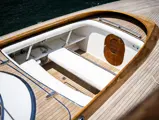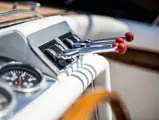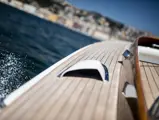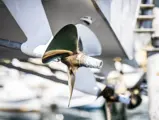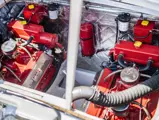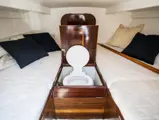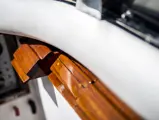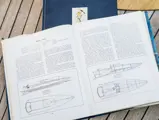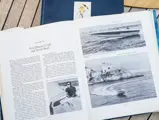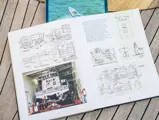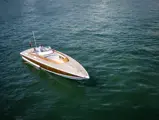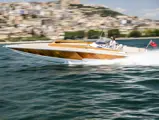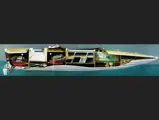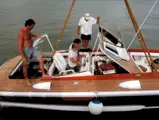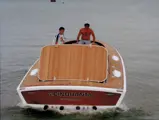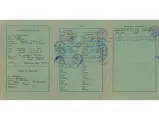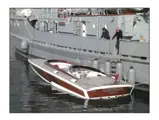
1968 Sonny Levi "G. Cinquanta"
{{lr.item.text}}
€450,000 EUR | Sold
Originally owned by Giovanni Agnelli
{{bidding.lot.reserveStatusFormatted}}
- Designed and built specially for Giovanni Agnelli
- Exclusive cockpit and cabin design by Sergio Pininfarina
- Breakthrough hull design and powerplant installation
- Four 8.0-litre V8 BPM Vulcano engines producing over 1,400 bhp
- Known history with only two owners from new
- Accompanied by original paperwork, registration papers and certificated of origin
- Meticulously maintained and restored, never raced
Please note that this lot will need to be collected in Naples, Italy.
Giovanni "Gianni" Agnelli was often described by the press of his time as "the most elegant man on Earth". Federico Fellini wrote: "Put him on a horse and he will look like a king". This was certainly true of everything the handsome and influential President of Fiat, Alfa Romeo, Lancia and Ferrari could touch, from fine art to unique automobiles and yachts, three of his lifelong major passions. Chased by paparazzi, he was able to keep his luxurious lifestyle of a true sportsman with some discretion, at the helm of his wonderful classic or modern sailing yachts as well as at the wheel of his racing speedboats and fast motor cruisers.
About a decade prior to 1968 and the launching of the "G. Cinquanta" commissioned by Gianni Agnelli, another "revolution" had already taken place, due to the invention of the deep-V hull by the American naval architect Raymond Hunt of Boston, Mass. This new hull shape designed for speed in high seas was to change the face of the nautical world. But, as soon as 1960, a boat designer by the name of Renato "Sonny" Levi decided to go even further in the definition of the fast "offshore" hull.
Born in Karachi, Pakistan, educated in France and England, and a flying officer of the RAF in 1944, he settled in Italy at the time of the economical boom of the early 1960s. In Italy, his designs were primarily intended to meet the needs of wealthy people with a penchant for speed who were looking for a yacht design ahead of its time. Since then, Renato Levi's Delta hulls with their typical long overhanging bows scarified by longitudinal steps have made history, with a golden book full of signatures of clients like Count Corrado Agusta, Prince Karim Agha Khan, Roberto Olivetti. Renato Levi also designed boats for prestigious boatyards such as Baglietto and Riva and also designed Richard Branson’s Virgin Atlantic Challenger II.
The first experience of Gianni Agnelli with a Levi designed boat took place as early as 1962 with Ultima Dea built for the first offshore race in Europe from Cowes to Torquay, England. This racing cabin cruiser was powered by nothing less than three Maserati 450 S engines (5.4-litre V-8s), followed by Ultima Volta, another "Delta" racing machine built in 1966. One year later, in 1967, Agnelli commissioned Renato Levi to change course and design for him a "fast pleasure craft" further to the following criteria: "Fast, reliable, able of negotiating mixed weather conditions with an acceptable degree of comfort" while, for safety reasons, sustaining a reasonable speed in case of mechanical problem. The answer was the 37 ft. (11.28 m) "G. Cinquanta" of G50 powered by four BPM legendary 8.0-litre, V-8 Vulcano engines totalling 1,280 hp. Selecting BPM engines, Levi chose the same dependable and light V-8 used on the Italian Coast Guard Fast patrol boats to chase the cigarette smugglers in the Adriatic Sea, who, by the way, also used V-8 BPM engines. BPM continue to this day to power many racing boats and yachts. Transmission was entrusted to four independent drives, shafts and propellers settings, able to push the boat at some 25 knots with two engines running only.
This safety speed was half of the proposed running speed of 50 knots (92 km/h) which gave its name to the G50, the "G" standing for Gianni. This much original design included two separated engine rooms, in front and at the rear of the cockpit where the central command console and cabin was due to the talented pencil of Sergio Pininfarina. The boat was perfectly built by Cantiere Delta in Anzio, the hull being strongly made in four cross-plies of laminated mahogany-epoxy sandwich, with a mechanical resistance to torsion higher then steel, with a deck in teak from Burma.
Even the paint including silicone parts was an innovative development made with the Veneziani company to obtain a glossy and very efficient surface able to reduce drag. Being a gentleman's fast commuter, the G50 had her engine compartment extremely well insulated to make sure the roar of the engines would not cover too much the beauty of the sound of speed while surfing on the Mediterranean waves. The Pininfarina designed cabin features two bunks as well as a toilet, sink and shower, making G50 highly usable. While at anchor, shade is provided for the cockpit and aft by white Bimini sunroofs and of course, there is the original stern ladder to go bathing, all in all making G50 highly usable.
Not long after her launching, G50 was described by a nautical journalist as "the best way to follow up an offshore racing event while arriving ahead of the winner..."
Gianni Agnelli took the wheel of his new boat, clocking some 2,000 miles over the first year, without complaining about anything on the G50, except for the efficiency of the windshield at high speed, affecting the capacity of the driver standing, four gas levers at hand, to keep his eyes wide open. Renato Levi returned to the drawing board and that was it.
Agnelli's newly designed boat promptly inspired Count Corrado Agusta to commission Renato Levi to build Barbarina, then Hidalgo for Roberto Olivetti, followed by Corsara for Karim Aga Khan. In the meantime, the current owner, in his early twenties at the time, was a relative and close friend of Gianni Agnelli and was struck by the beauty of G50. He first thought of commissioning Renato Levi to build a sister-ship then went for a more affordable Maltese Magnum. However, in 1975, the current owner, who also later owned the fascinating pre-WWII "J" Class America's Cup sailing yacht Astra, luckily received G50 as a present from Gianni Agnelli, keeping Renato Levi's unique design achievement immaculate over the course of the last forty-five years, as such a first-hand masterpiece deserves and residing in the same stable as Corsara for the last 30 years!
Having been revised with four new BPM V-8 Vulcanos, which have logged in all just over 100 hours, "G. Cinquanta" is running at perfection, totally original from deck to bottom, ready to fill the original commission criteria defined in style by Gianni Agnelli to obtain a very usable boat: "a fast pleasure craft, reliable, able of negotiating mixed weather conditions with an acceptable degree of comfort".
Technical specifications:
-Length (LOA): 11.28 m (37 ft.)
-Length at the waterline: 9.65 m (31.7 ft.)
-Max. beam: 3.18 m (10.4 ft.)
-Draft: 0.58 m (22.8 in.)
-Weight: 4.8 tons
-Engines: Four BPM 8.0-litre V-8 Vulcano engines with heat exchangers
-Power (total): 1,440 hp
-Transmission: 4 gearbox/shaft/drive/propeller
-Fuel tank capacity: 4 x 400 litres
-Fast cruising speed: 35 knots (65 kph)
-Top speed: approximately 55 knots (102 kph)
-Autonomy: approximately 300 miles at 3,200 rpm
ITALIAN
Storia conosciuta con solo due proprietari di nuova
Mantenuto e restaurato con cura, non ha mai corso
Giovanni (Gianni) Agnelli fu spesso descritto dalla stampa del suo tempo come "l'uomo più elegante della Terra". Federico Fellini scriveva: "Mettetelo su un cavallo e sembrerà un re". Questo era certamente vero per tutto ciò che il bel e influente Presidente di Fiat, Alfa Romeo, Lancia e Ferrari poteva toccare, dalle belle arti alle automobili e agli yacht unici, tre delle sue grandi passioni di una vita. Inseguito dai paparazzi, ha saputo mantenere con una certa discrezione il suo lussuoso stile di vita da vero sportivo, al timone dei suoi meravigliosi yacht a vela classici o moderni, così come al volante dei suoi motoscafi da corsa e dei suoi veloci incrociatori a motore.
Circa un decennio prima del 1968 e del varo del G-Cinquanta commissionato da Gianni Agnelli, era già avvenuta un'altra "rivoluzione", dovuta all'invenzione dello scafo Deep-V da parte dell'architetto navale americano Raymond Hunt di Boston, Mass. Questa nuova forma di scafo progettata per la velocità in alto mare doveva cambiare il volto del mondo nautico. Ma, già nel 1960, un progettista di barche che si chiamava Renato "Sonny" Levi decise di andare ancora più lontano nella definizione dello scafo veloce "offshore". Nato a Karachi, in Pakistan, educato in Francia e in Inghilterra, e ufficiale di volo della RAF nel 1944, si stabilisce in Italia all'epoca del boom economico dei primi anni Sessanta. In Italia, i suoi progetti erano destinati principalmente a soddisfare le esigenze di persone facoltose con un debole per la velocità che cercavano un progetto di yacht in anticipo sui tempi. Da allora, gli scafi "Delta" di Renato Levi, con le tipiche prue lunghe e sporgenti scarificate da gradini longitudinali, hanno fatto storia, con un libro d'oro pieno di firme di clienti come il Conte Corrado Agusta, il Principe Karim Agha Khan, Roberto Olivetti. Renato Levi ha anche progettato imbarcazioni per prestigiosi cantieri come Baglietto e Riva e ha disegnato il Virgin Atlantic Challenger II di Richard Branson.
La prima esperienza di Gianni Agnelli con una barca progettata da Levi risale al 1962 con Ultima Dea costruita per la prima regata d'altura in Europa da Cowes a Torquay, in Inghilterra. Questo cabinato da regata era spinto da niente meno che tre motori Maserati 450 S (V8 da 5,4 litri), seguito da Ultima Volta, un'altra macchina da regata "Delta" costruita nel 1966. Un anno dopo, nel 1967, Agnelli incaricò Renato Levi di cambiare rotta e di progettare per lui una "veloce imbarcazione da diporto" secondo i seguenti criteri: "Veloce, affidabile, in grado di affrontare condizioni meteo miste con un grado di comfort accettabile" e, per ragioni di sicurezza, di mantenere una velocità ragionevole in caso di problemi meccanici. La risposta è stata il G-Cinquanta da 37 piedi (11,28 m) G-Cinquanta del G50 alimentato da quattro leggendari motori BPM da 8,0 litri V8 Vulcano per un totale di 1.280 CV. Selezionando i motori BPM, Levi ha scelto lo stesso affidabile e leggero V8 utilizzato sulle motovedette della Guardia Costiera Italiana per inseguire i contrabbandieri di sigarette nel Mare Adriatico, che, tra l'altro, utilizzavano anche motori V8 BPM. I BPM continuano ancora oggi ad alimentare molte barche da corsa e yacht. La trasmissione era affidata a quattro azionamenti, alberi ed eliche indipendenti, in grado di spingere la barca a circa 25 nodi con due soli motori in funzione.
Questa velocità di sicurezza era la metà di quella proposta di 50 nodi (92 km/h) che ha dato il nome al G50, la "G" che sta per Gianni. Questo progetto molto originale comprendeva due sale macchine separate, davanti e dietro il pozzetto, dove la console di comando centrale e la cabina si devono alla matita di Sergio Pininfarina. La barca è stata costruita perfettamente dal Cantiere Delta di Anzio, lo scafo è stato realizzato in quattro strati incrociati di sandwich laminato mahagony-epoxy, con una resistenza meccanica alla torsione superiore all'acciaio, con un ponte in teak birmano.
Anche la verniciatura con parti in silicone è stata uno sviluppo innovativo realizzato con la ditta Veneziani per ottenere una superficie lucida e molto efficiente in grado di ridurre la resistenza aerodinamica. Essendo un pendolare veloce, il G50 aveva il vano motore estremamente ben isolato per assicurarsi che il rombo dei motori non coprisse troppo la bellezza del suono della velocità durante la navigazione sulle onde del Mediterraneo. L'abitacolo progettato da Pininfarina è dotato di due cuccette, oltre che di toilette, lavandino e doccia, rendendo il G50 altamente utilizzabile.
Non molto tempo dopo il suo varo, il G50 è stato descritto da un giornalista nautico come "il modo migliore per seguire una regata d'altura mentre si arriva davanti al vincitore...".
Gianni Agnelli ha preso il timone della sua nuova barca, percorrendo circa 2.000 miglia nel corso del primo anno, senza lamentarsi.






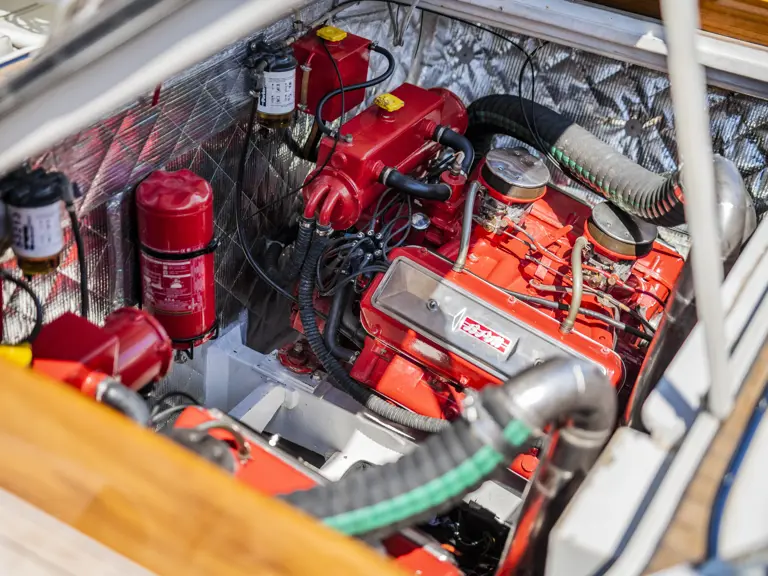








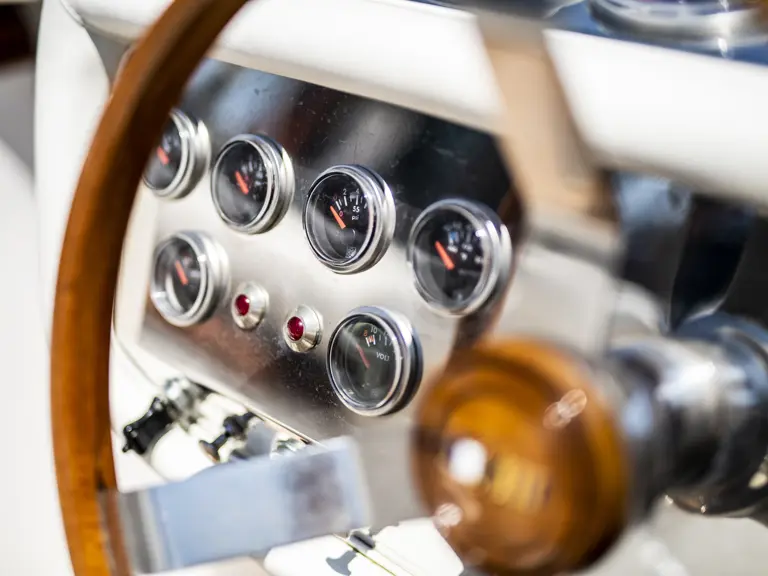
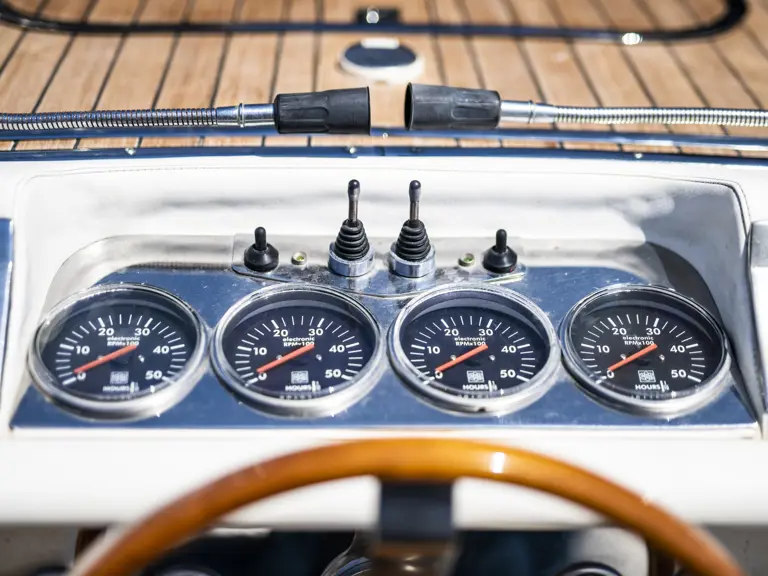

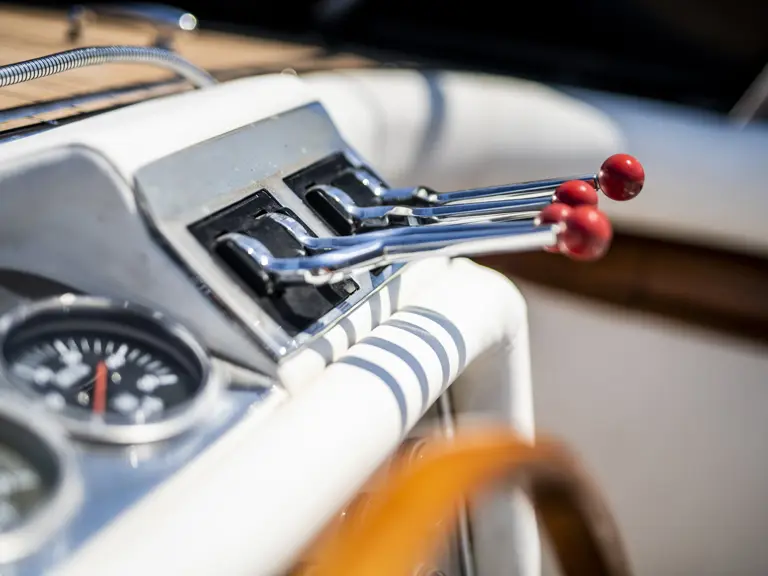






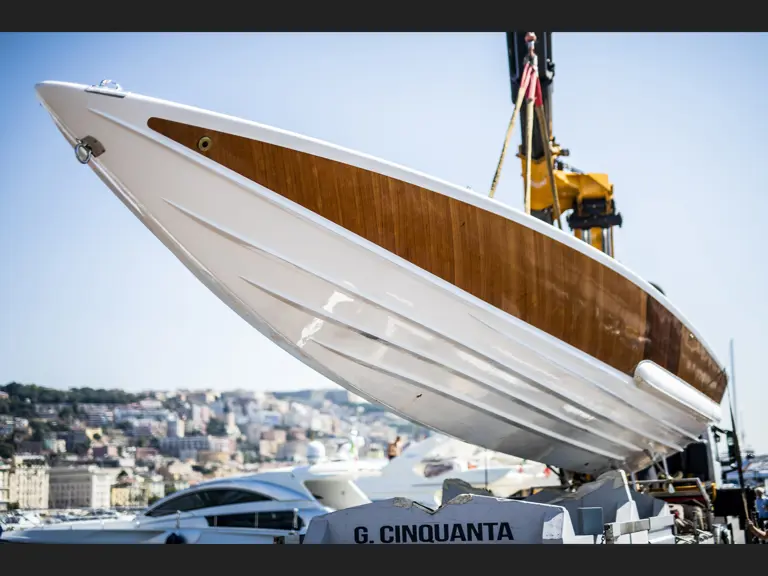








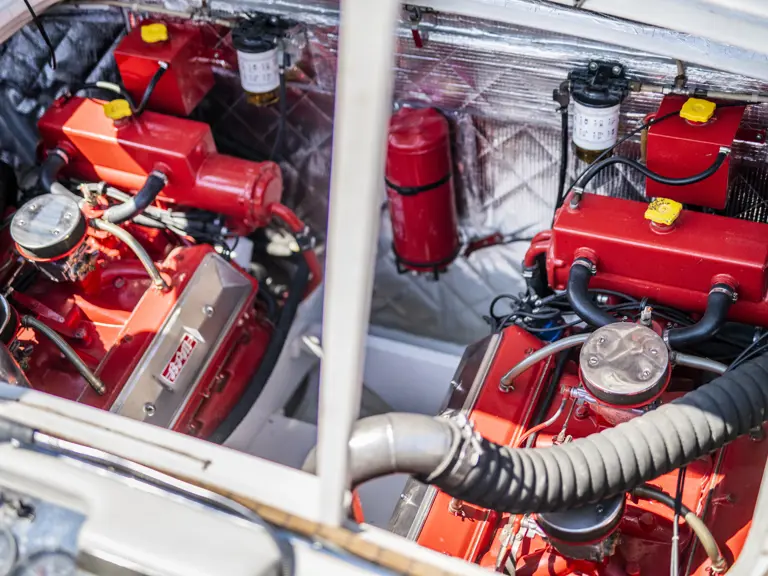




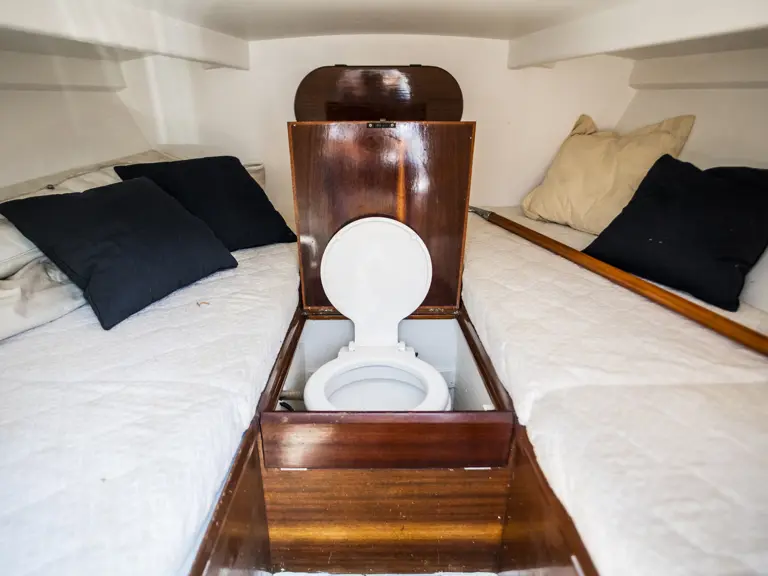









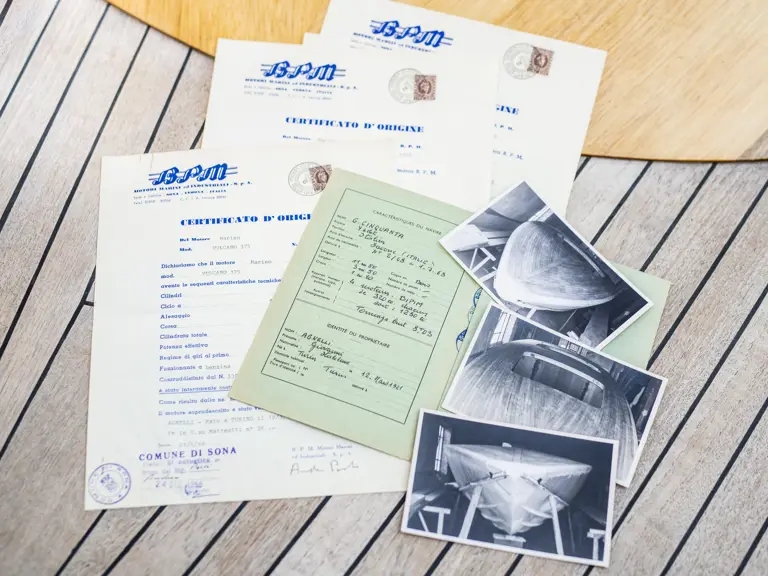



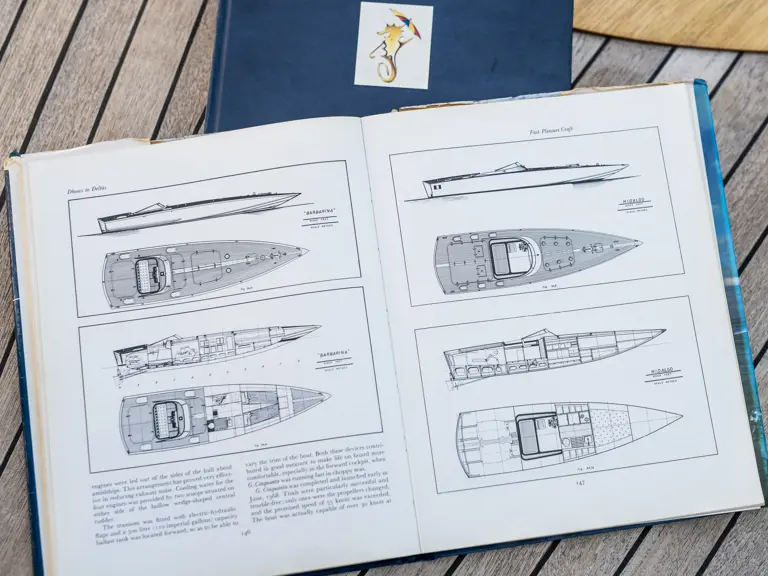
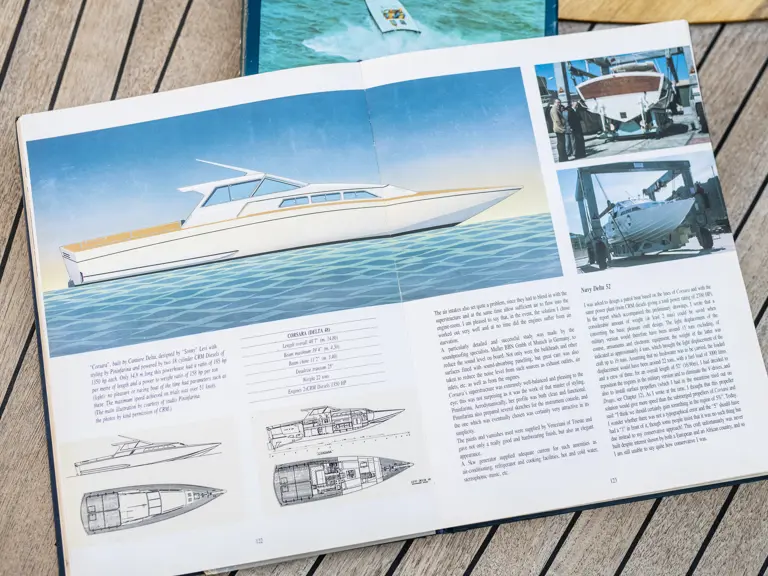









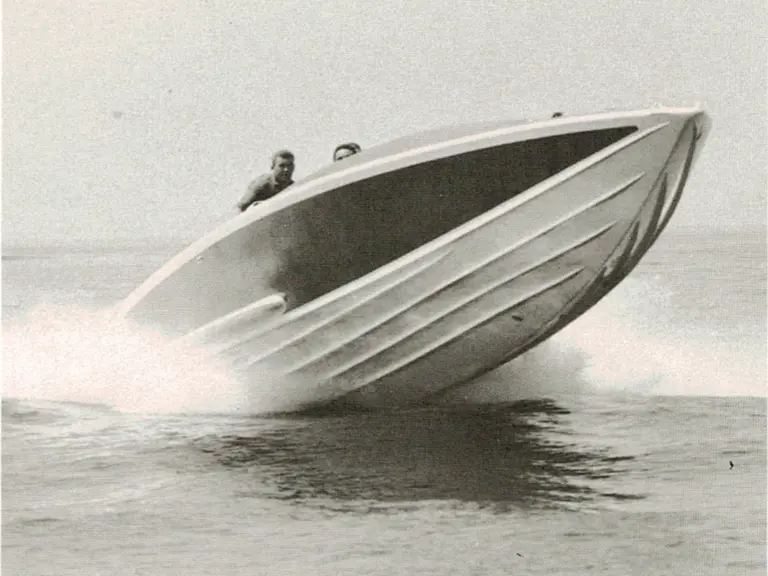


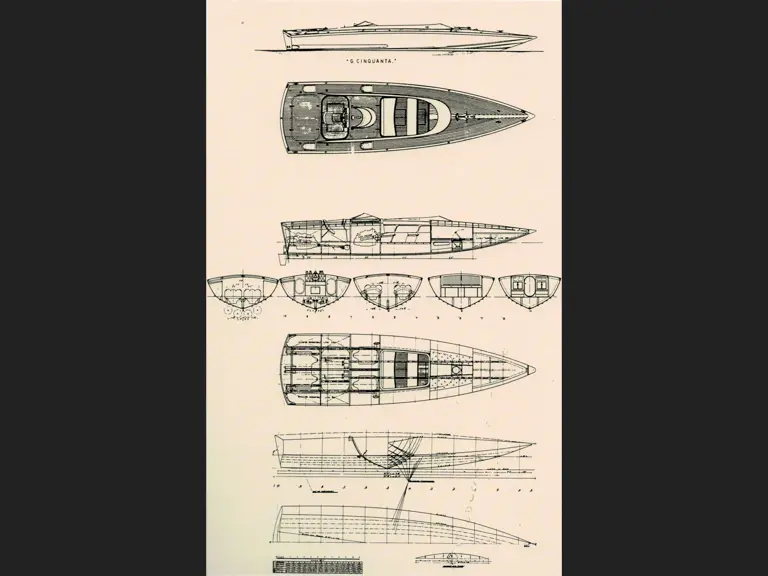







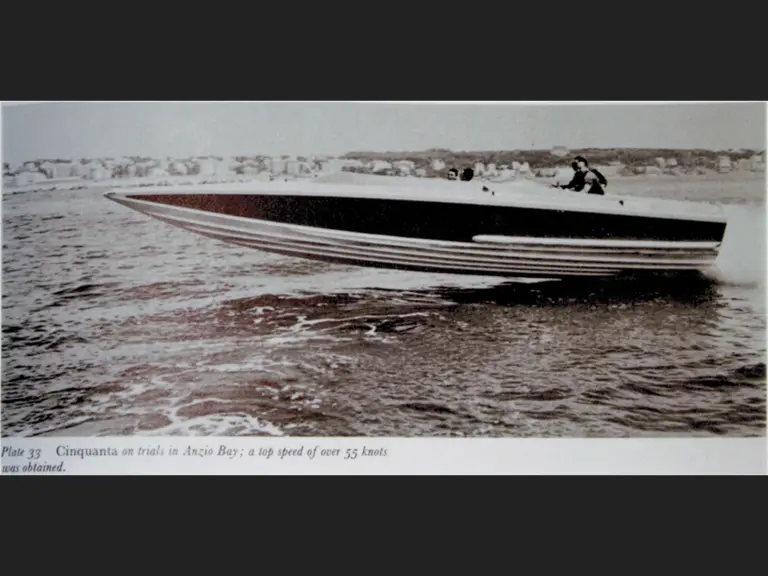











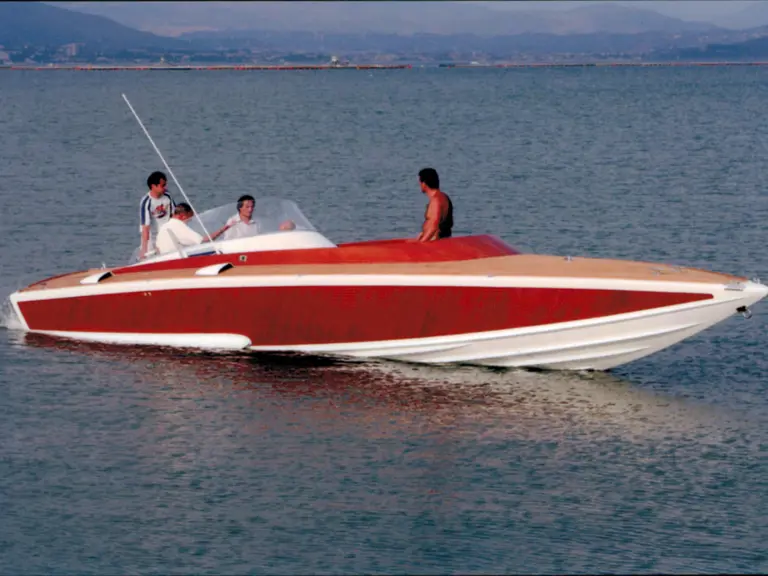




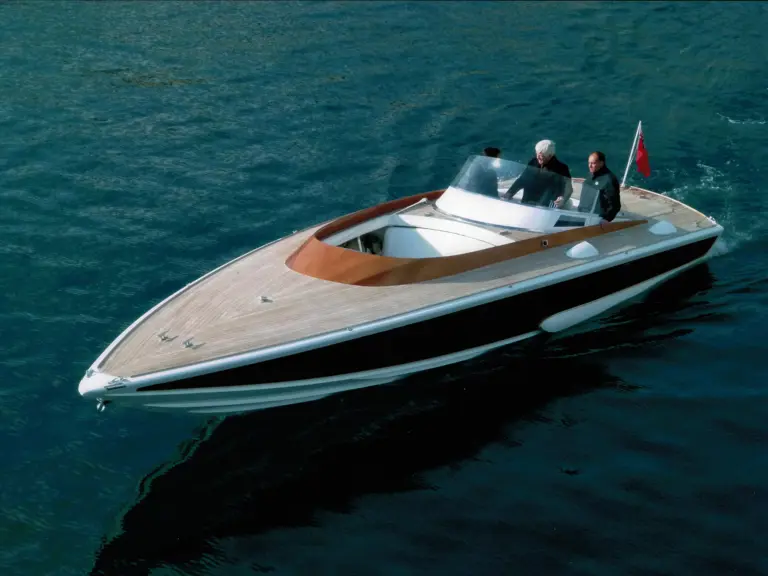


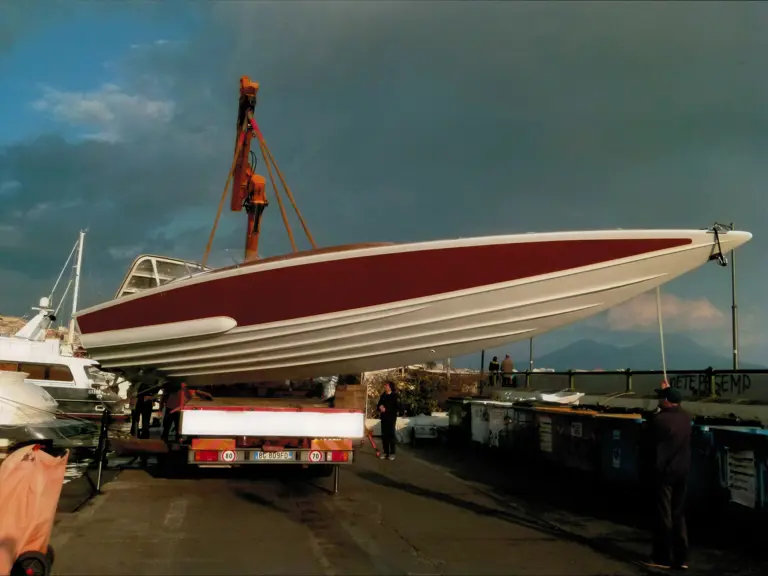
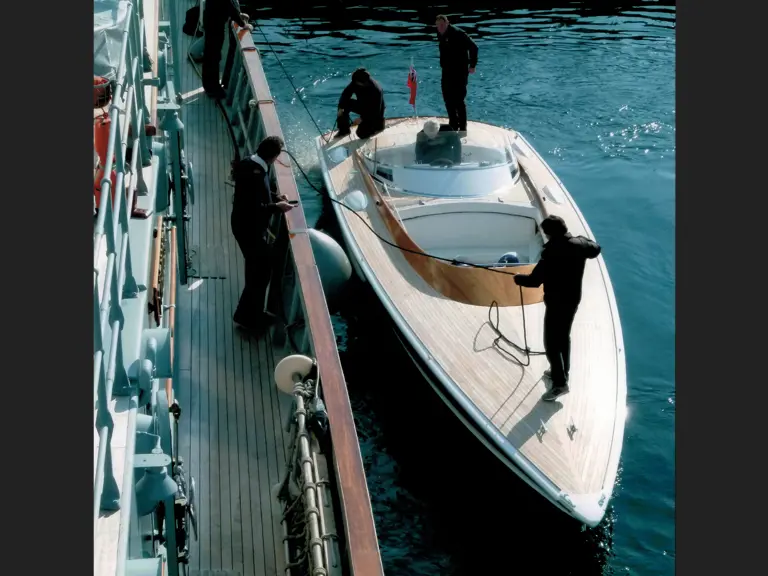





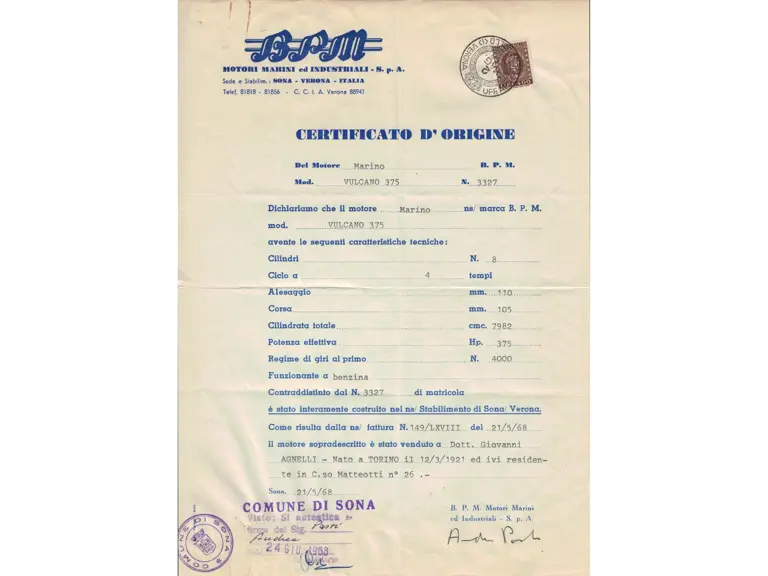
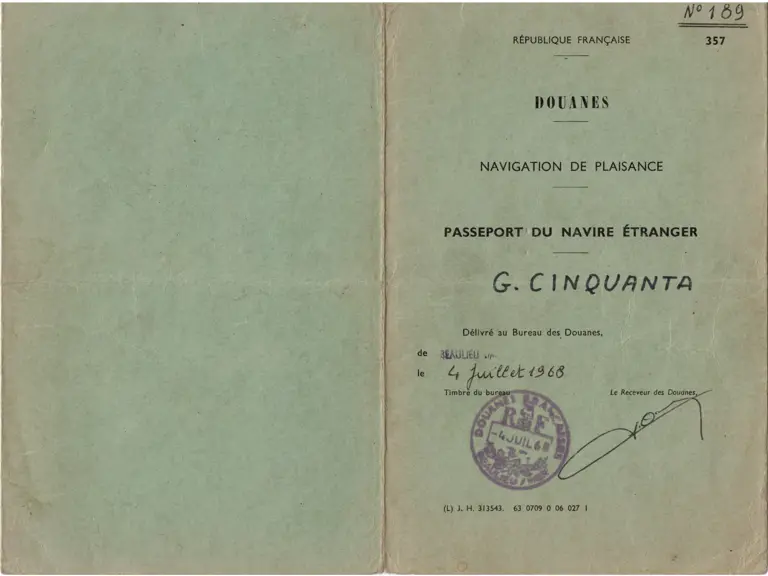
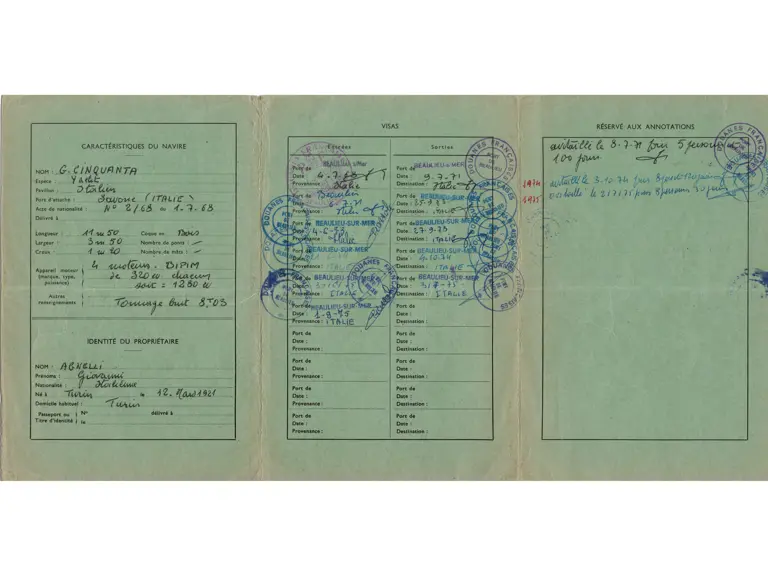

 | Naples, Italy
| Naples, Italy







